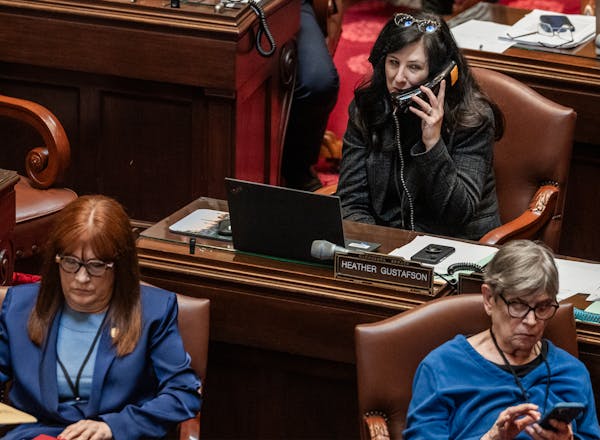The Minnesota Orchestra gives a nod to its illustrious past at Orchestra Hall this weekend — the final concerts of the season — with the German violinist Christian Tetzlaff playing the Violin Concerto by Alban Berg, one of the most subtle and powerful concertos of the 20th century.
Louis Krasner, the Russian-born violinist who was concertmaster of this orchestra from 1944 to 1949, when it was the Minneapolis Symphony, had given the premiere of the concerto in Barcelona in 1936. In 1944, when he introduced himself to the symphony's music director, Dimitri Mitropoulos, in New York City, Mitropoulos immediately offered him the concertmaster position.
Krasner that very day had signed a contract with the Indianapolis Symphony. But the charismatic Mitropoulos was a hard man to say no to, so Krasner tore up the contract, moved to Minneapolis and the following January played the Berg concerto with the orchestra at Northrop Auditorium.
The work was prompted by the death from polio of 18-year-old Manon Gropius, daughter of the architect Walter Gropius and Gustav Mahler's widow, Alma. The concerto ended up not so much a memorial as an outpouring of grief on the part of Berg, who had been attracted to Manon.
Berg may even have been thinking also of his own death — he died before he could hear the piece played — for the end of the concerto includes a chorale from Bach's Cantata No. 60, which speaks of transcending death.
With Osmo Vänskä presiding attentively at the podium Thursday morning, Tetzlaff gave these final pages an appropriately elegiac character, with poised and elegant tone, as if the sound were bathed in a delicate light conveying a sense of profound nostalgia and regret. Earlier on, the more vigorous passages, both in the orchestra and the solo line, were delivered with a clarity and a striking unity and fidelity to Berg's dynamic markings.
The connections between Berg's concerto and Mahler's Symphony No. 5, which took up the second half of the concert, are numerous to the point of being uncanny. Both make use of chorales. Both are preoccupied with the death of a young female — a child in the case of the song Mahler quotes in his first movement. Manon Gropius' mother being Mahler's widow. One could go on.
For this performance, Vänskä placed the cellos in front of the podium and just off to the left, presumably to give them more resonance, especially in the beautiful fourth movement.
The excellence of the performance came in its giving vent to Mahler's emotional extremism while never losing careful touch with the details of the score. The big moments, the chorales in the second and fifth movements — what we hear in only slightly modified form in the "Star Wars" movies — soared with heroic power and rich sounds from the brass. The middle movement displayed a proper Viennese lilt.
Michael Anthony is a Twin Cities classical music critic.
Supreme Court sides with music producer in copyright case over sample in Flo Rida hit

Expect clearer air this summer in Minnesota, thanks to a milder wildfire season

